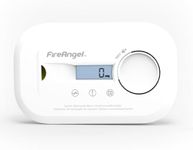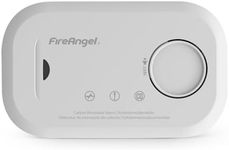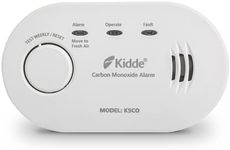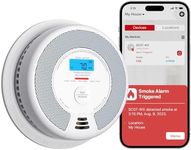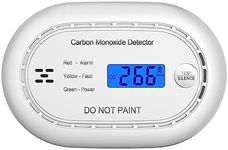Buying Guide for the Best Carbon Monoxide Detectors
Choosing the right carbon monoxide detector is crucial for ensuring the safety of your home and family. Carbon monoxide is a colorless, odorless gas that can be deadly, so having a reliable detector is essential. When selecting a carbon monoxide detector, consider the following key specifications to make an informed decision that best suits your needs.Sensor TypeThe sensor type in a carbon monoxide detector determines how it detects the presence of carbon monoxide. Common types include electrochemical, biomimetic, and metal oxide semiconductor sensors. Electrochemical sensors are highly accurate and respond quickly to CO levels, making them ideal for most homes. Biomimetic sensors mimic the human body's response to CO and are also reliable but may be slower to react. Metal oxide semiconductor sensors are less common and can be less accurate. Choose a detector with an electrochemical sensor for the best performance.
Power SourceCarbon monoxide detectors can be powered by batteries, hardwired into your home's electrical system, or plugged into an outlet. Battery-powered detectors offer flexibility in placement and continue to work during power outages, but require regular battery replacement. Hardwired detectors are more permanent and often come with battery backup, ensuring continuous operation. Plug-in detectors are easy to install but may be limited by outlet locations. Consider your home's layout and choose a power source that ensures consistent and reliable operation.
Display and AlertsThe display and alert features of a carbon monoxide detector provide critical information about CO levels and the device's status. Some detectors have digital displays that show real-time CO levels, which can be helpful for monitoring and peace of mind. Audible alarms are standard and should be loud enough to wake you during sleep. Some models also offer voice alerts or visual indicators like flashing lights. Choose a detector with clear and effective alert features to ensure you are promptly informed of any danger.
InterconnectivityInterconnectivity allows multiple carbon monoxide detectors to communicate with each other. If one detector senses CO, all interconnected detectors will sound the alarm, providing comprehensive coverage throughout your home. This feature is particularly useful in larger homes or multi-story buildings. Look for detectors that can be interconnected wirelessly or through hardwiring to enhance your home's safety.
Additional FeaturesSome carbon monoxide detectors come with additional features such as smoke detection, smart home integration, or mobile app connectivity. Smoke detection can provide dual protection, while smart home integration allows you to monitor CO levels remotely and receive alerts on your smartphone. Mobile app connectivity can offer convenience and added peace of mind. Consider these features based on your lifestyle and preferences to enhance the functionality of your carbon monoxide detector.
CertificationCertification ensures that a carbon monoxide detector meets safety standards and has been tested for reliability. Look for detectors that are certified by recognized organizations such as UL (Underwriters Laboratories) or CSA (Canadian Standards Association). Certification provides assurance that the detector will perform effectively in detecting carbon monoxide and alerting you to danger. Always choose a certified detector to ensure the highest level of safety.
